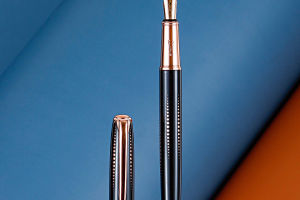When it comes to motorcycles, the engine is like its heart, and it is the power source that generates the energy needed for driving. The engine determines the driving experience of a motorcycle, and this statement is not exaggerated at all.
To fully understand an engine's performance, the best indicator is its horsepower (hp). Generally, the horsepower naturally tends to be higher for models with larger displacement.
For example, a lightweight motorcycle with a 50cc engine usually has a maximum horsepower of around 5hp, but for a high-performance sports bike with a 1000cc engine, the horsepower can exceed 200hp. Although the displacement of the two types of motorcycles differs by 20 times, the horsepower differs by 40 times.
Horsepower is essentially the working efficiency of a motorcycle. Simply put, it is the ability to move a certain weight over a meter in one second. Horsepower is usually expressed using hp, but kW is also commonly seen lately.
For example, if an engine has 1 horsepower (1hp), it possesses the ability to move a 75kg weight by one meter per second. The actual horsepower of a real horse is approximately between 2 to 3 hp (if it's a purebred horse, it can even generate 20 hp of power instantly).
In comparison, an average person, if not a top athlete, may not even possess 1 hp. From this perspective, the horsepower of lightweight motorcycles is quite remarkable!
The acceleration of a 1000cc super sports motorcycle can be compared to that of an F1 race car.
Returning to the topic, although motorcycles may exhibit a huge disparity in horsepower due to differences in displacement, the difference in weight is not that significant. Assuming a lightweight motorcycle weighs 80kg, even a 1000cc model usually weighs around 200kg, which is only 2.5 times heavier.
Therefore, because the power-to-weight ratio (PWR) of large-displacement motorcycles (PWR = the weight each unit of horsepower supports) is relatively low, it is naturally believed that their acceleration performance will be excellent.
Suppose the PWR value of a 1000cc super sports motorcycle with a maximum horsepower of 200hp and a weight of 200kg is 1.0. In that case, the PWR value of a lightweight motorcycle with a maximum horsepower of 5hp and a weight of 80kg would be 16.0. By the way, in the world of cars, only F1 race cars have a PWR lower than 1.0. From this point, we can see why motorcycles are generally considered to have outstanding acceleration performance.
Although large-displacement motorcycles may be challenging to handle, they can bring immense satisfaction.
However, excellent acceleration performance means reaching astonishing speeds in an instant, so controlling such remarkable speed, then safely maneuvering the motorcycle around corners or coming to a stop, naturally becomes a challenging task.
Moreover, larger displacement engines require a sturdy frame capable of withstanding strong horsepower, so the weight of the motorcycle naturally increases, affecting its handling and performance.
If you want to control a large motorcycle with strong horsepower and astonishing weight, in addition to having a correct understanding, judgment, and manipulation ability of the motorcycle, you must also have self-control. This is precisely why controlling large motorcycles is so difficult. Conversely, when a rider can effortlessly control a large motorcycle, they will naturally experience unparalleled satisfaction.
The fun of small-displacement motorcycles lies in how to maximize their performance.
On the other hand, motorcycles with a displacement of 250cc or less are not only easy to maneuver but also allow riders to enjoy the agile handling brought by their lightweight and compact bodies.
Although in terms of power-to-weight ratio (PWR), small-displacement motorcycles cannot match large-displacement motorcycles, due to their lighter weight, the braking distance naturally becomes shorter. So, it is an undeniable fact that they often surpass large-displacement motorcycles in cornering speed.
Even though it may feel powerless due to the driving environment, small-displacement motorcycles can still provide riders with the thrill of fully utilizing the engine's performance.
In other words, small-displacement motorcycles are the easiest to handle and can demonstrate performance comparable to large-displacement motorcycles depending on the rider's driving skills.
However, if riders underestimate small-displacement motorcycles because they are easy to handle, even riding a lightweight motorcycle can lead to serious accidents. Motorcycles are vehicles more susceptible to the influence of engines than cars, and different engines can bring drastically different driving experiences.
After test-driving motorcycles with various displacements, one will surely have a deeper appreciation for the fun and allure of motorcycles. If given the chance, everyone should test-drive motorcycles with different displacements themselves.


